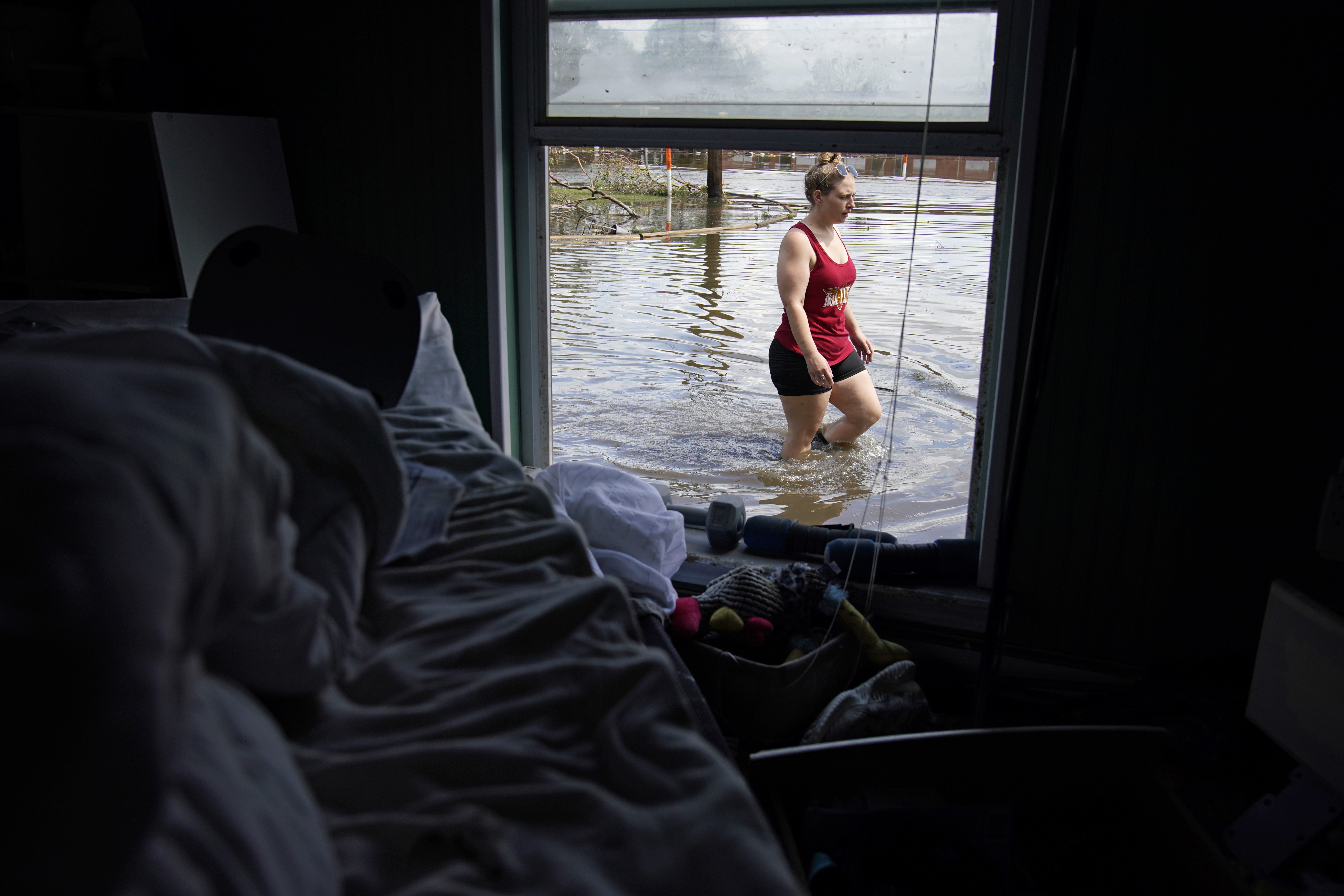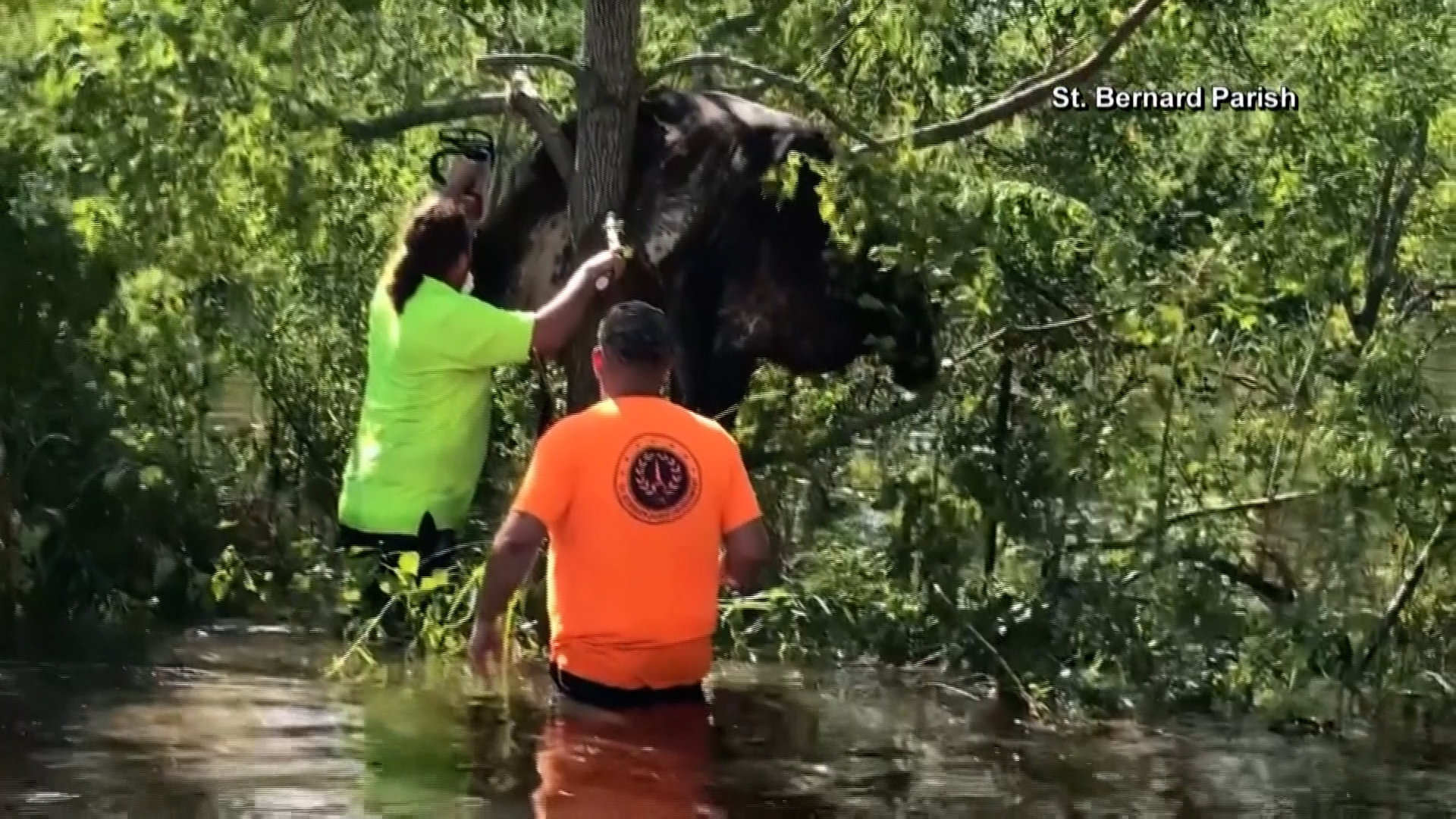A stunned U.S. East Coast faced a rising death toll, surging rivers, tornado damage and continuing calls for rescue Thursday after the remnants of Hurricane Ida walloped the region with record-breaking rain, drowning dozens in their homes and cars.
In total, Ida has killed at least 58 people in the United States, according to NBC News.
In a region that had been warned about potentially deadly flash flooding but hadn't braced for such a blow from the no-longer hurricane, the storm killed at least 2 people in Pennsylvania, one person in Connecticut and one person in Maryland.
At least 23 people died in New Jersey, Gov. Phil Murphy said. At least 16 people died in New York City, according to authorities.
Get a weekly recap of the latest San Francisco Bay Area housing news. Sign up for NBC Bay Area’s Housing Deconstructed newsletter.
In New York City, Sophy Liu roused her son from bed and put him in a life jacket and inflatable swimming ring as their first-floor apartment flooded in Queens.
Unable to open the door against the force of the water, she called friends for help. The water was nearly 5 feet (1.5 meters) high when they came to her rescue, she said.
“I was obviously scared, but I had to be strong for my son. I had to calm him down,” she recalled Thursday as medical examiners removed three bodies from a home down the street.
Ida Brings Historic Flooding, Tornadoes to Northeast
In another part of Queens, water rapidly filled Deborah Torres' first-floor apartment to her knees as her landlord frantically urged her neighbors below — who included a baby — to get out, she said. But the water rushed in so strongly that she surmised they weren't able to open the door. The three residents died.
“I have no words," she said. “How can something like this happen?”
Ida's remnants maintained a soggy core, then merged with a more traditional storm front and dropped an onslaught of rain on the Interstate 95 corridor, meteorologists said. Similar weather has followed hurricanes before, but experts said it was slightly exacerbated by climate change — warmer air holds more rain — and urban settings, where expansive pavement prevents water from seeping into the ground.
The National Hurricane Center had warned since Tuesday of the potential for “significant and life-threatening flash flooding" and moderate and major river flooding in the mid-Atlantic region and New England.
Still, New York Gov. Kathy Hochul and New York City Mayor Bill de Blasio said the storm's strength took them by surprise.
"We did not know that between 8:50 and 9:50 p.m. last night, that the heavens would literally open up and bring Niagara Falls level of water to the streets of New York,” said Hochul, a Democrat who became governor last week after former Gov. Andrew Cuomo resigned.
De Blasio, also a Democrat, said he'd gotten a forecast Wednesday of 3 to 6 inches (7.5 to 15 cm) of rain over the course of the day. The city's Central Park ended up getting 3.15 inches just in one hour, surpassing the previous recorded high of 1.94 inches (5 cm) in one hour during Tropical Storm Henri on Aug. 21.
Wednesday's storm ultimately dumped over 9 inches (23 cm) of rain in parts of New Jersey, Pennsylvania, Massachusetts and Rhode Island, and nearly as much on New York City’s Staten Island.
In Washington, President Joe Biden assured Northeast residents that federal first responders were on the ground to help clean up.
As Ida's remnants hit New York, some highways flooded, garbage bobbed in streaming streets and water cascaded into the city's subway tunnels, trapping at least 17 trains and halting service until early morning. Videos online showed riders standing on seats in swamped cars. All riders were evacuated safely, officials said.
At one Queens development, water filled the sunken patio of a basement apartment, then broke through a glass door, trapping a 48-year-old woman in 6 feet (2 meters) of water. Neighbors unsuccessfully tried for an hour to save her.
More Hurricane Ida Coverage
“She was screaming, ‘Help me, help me, help me!’ We all came to her aid, trying to get her out. But it was so strong – the thrust of the water was so strong," said the building’s assistant superintendent, Jayson Jordan.
In Elizabeth, New Jersey, near Newark Airport, four people died and 600 were left homeless from rain and river flooding in an apartment complex, Mayor J. Christian Bollwage said.
Neighbors described hearing screaming from the complex at about 11 p.m. as water flowed down the street, pushing dumpsters and cars around.
“Sandy had nothing on this,” resident Jennifer Vilchez said, referring to 2012′s Superstorm Sandy.
Greg Turner, who lives in another part of the city, said his 87-year-old mother started calling 911 from the complex at 8 p.m. when the water started rising in her apartment. High water kept him and his brother from getting to her.
As midnight approached, the water reached her neck, he said. Rescuers finally cut through the floor of the apartment above and pulled her to safety.
“She lost everything," Turner said as he headed to a bank for money to buy his mother clothes and shoes.
In New Jersey's Milford Borough, authorities said they found a man’s body in a car buried up to its hood in dirt and rocks.
The ferocious storm also spawned tornadoes — at least seven, according to the National Weather Service. One split trees on Cape Cod, another tore off part of a high school roof in suburban Philadelphia and yet another ripped apart homes and toppled silos in Mullica Hill, New Jersey, south of Philadelphia.
"It just came through and ripped,” said resident Jeanine Zubrzycki, 33, who hid in her basement with her three children as the house shook and lights flickered. When the danger passed, they went upstairs and saw a neighbor's house had been destroyed.
“And then you could just hear people crying,” said Zubrzycki, 33, whose own home was damaged but liveable.
Record flooding along the Schuylkill River in Pennsylvania inundated homes, highways and commercial buildings, even as meteorologists warned that rivers likely won’t crest for a few more days. The riverside community of Manayunk remained largely under water.
The Schuylkill reached levels not seen in over 100 years in Philadelphia, where firefighters were still getting calls about minor building collapses and people stuck in flooded cars Thursday morning, Fire Commissioner Adam Thiel said. The managers of a 941-unit apartment complex near the river ordered residents to evacuate, citing “deteriorating” conditions after water rushed into the parking garage and pool areas.
In suburban Bucks County, several firefighters had to be rescued after rushing floodwaters pinned a rescue boat against a bridge pier, state emergency management director Randy Padfield said.
Others were unable to escape the floods, including Donald Bauer, who was driving home to Perkiomenville after attending their daughter’s volleyball game at DeSales University, near Allentown. The game had been moved up by two hours because of the weather.
State police Trooper Nathan Branosky said Bauer, 65, drowned in the car after helping his wife get out.
His wife is hospitalized, DeSales spokesperson Michael Corr said.
A flash flood warning continued into Thursday in New England, where authorities used boats to rescue 18 people from a neighborhood in Plainville, Connecticut, and 15 people — one in a wheelchair — from a complex in North Kingstown, Rhode Island. A road in Portsmouth, Rhode Island, crumbled.
In Frederick County, Maryland, first responders used a boat to rescue 10 children and a driver from a school bus caught in rising waters.
On Sunday, Ida struck Louisiana as the fifth-strongest storm to ever hit the U.S. mainland, leaving 1 million people without power, maybe for weeks.
Porter reported from Elizabeth, New Jersey. AP reporters Bobby Caina Calvan, Karen Matthews and Jennifer Peltz in New York City; Maryclaire Dale in Mullica Hill, New Jersey; Seth Borenstein and Darlene Superville in Washington; Dave Collins in Hartford, Connecticut; Mark Pratt in Waltham, Massachusetts; Michael Catalini and Shawn Marsh in Trenton, New Jersey; Wayne Parry in Point Pleasant, New Jersey; Michael Rubinkam in northeastern Pennsylvania, Claudia Lauer in Philadelphia and Mark Scolforo in Harrisburg, Pennsylvania, contributed to this report.



